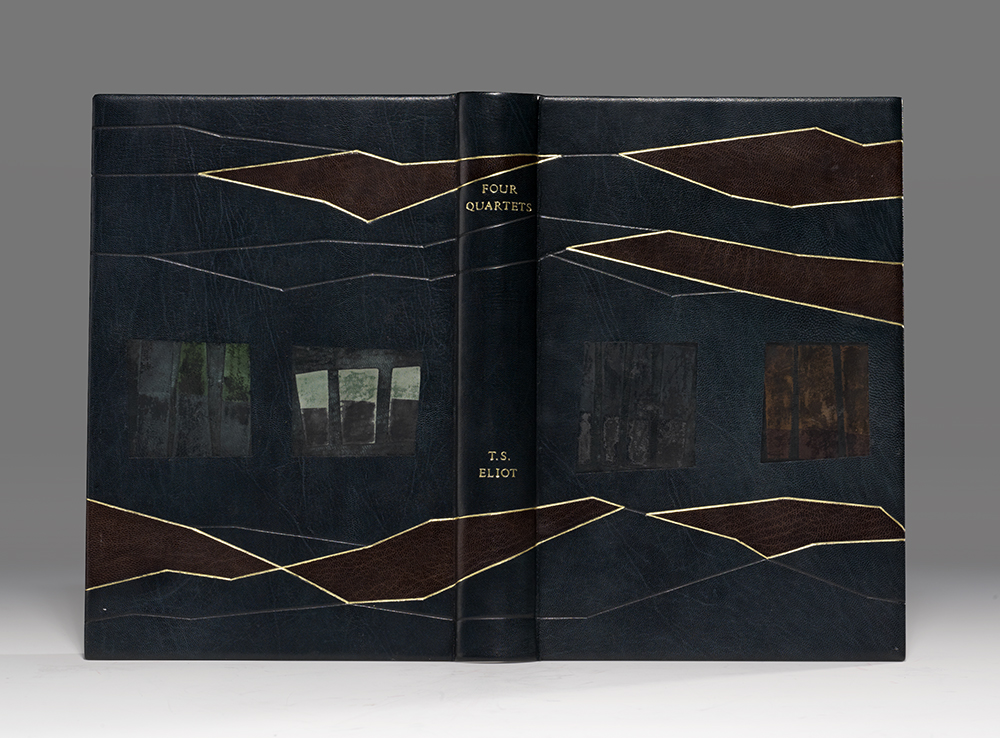Description
“WE SHALL NOT CEASE FROM EXPLORATION?”: T.S. ELIOT’S CULMINATING WORK, FOUR QUARTETS, INSCRIBED BY ELIOT
ELIOT, T.S. Four Quartets. London: Faber and Faber, (1944). Thin octavo, original tan cloth with gilt stamped spine, original light gray dust jacket.
First combined English edition of “the most important poem… as many think, of the century,” inscribed on the title page, “(most warmly) to W.J. Crawley by T.S. Eliot.”
“The four poems which make up this volume have all appeared separately? The author, however, has always intended them to be published as one volume, and to be judged as a single work.” The Four Quartets, as finally realized together in this edition, are parts of a unified work loosely based upon the scheme of the four seasons and the four elements. Named after American or English villages and landscapes, the poems are meditations upon conflict and peace, poetry and philosophy, time and eternity. The first of Eliot’s poems to reach a wide public, their celebration of England and Anglicanism was seen as a unifying force in the besieged England of World War II. “In the Four Quartets as a whole, we see the outlines of a tradition, beautifully limned but shimmering like an hallucination before it disappears and the sirens of a catastrophic European war intrude. The ambivalence between the formal order of the poem and troubled intimations of its own fragility, between its direct eloquence and the presence of Eliot’s private memories concealed beneath the surface of that eloquence, gives the poem its power” (Peter Ackroyd, T.S. Eliot). “The Quartets preserve the melodic line, the intricacy of thought and shape which is the high point of Eliot’s technique applied to what are really religious and philosophical meditations… The Four Quartets [is] the most important poem… as many think, of the century” (Connolly 92). Gallup A43b. Sackton A43b.
Book fine, dust jacket with only shallow chipping to extremities. An excellent copy of this classic, inscribed.



